Two days ago I received a premonition of death, which I thought referred to my own. I was sitting on a hillock in Central Park, basting in a warm slow sun watching birds and some sailboats at the Conservatory of Water when it happened. I thought of my grandfather and my father - both had died before they were 60 (55 in fact) - and made the logical conclusion that their descendant (meaning, me) is drawn a similar fate. I always have these thoughts of death whenever I feel the advent of something new. something changing.
Today I heard of the passing of Roberto Chabet, 76, a pioneering conceptual artist, who while childless, through his mentorship and dedication to his students, is a father to young generations of likeminded mavericks. Many of these artists-children are my peers, classmates and friends. Yet he was not my teacher; I have deliberately chose not to, in 1996. I shifted to another course, in Art History, just to evade being "educated" in what I thought back then was a faddish fascination for second-hand Art in America and ArtNews gospels of "what art should be". I was during that period studying under another great mentor, also another Roberto, the curator Bobi Valenzuela, and with him I was critical of anything of art that didn't consider being "Filipino" first, and foremost.
In an essay I wrote for a workshop in Jakarta in 2006 I compared the styles and values of these two Robertos-as-curators. Bobi had told me that while people had pitted him with Chabet he said he had no quarrel with "Bobby". He was a curator he really admired since his methodology was charged as a provocateur, tossing ideas and letting his students and then his artists to figure out how to respond. I was so pleased when this essay was in fact, copy-pasted by Sir Chabet in his Facebook account, some years ago. It was an event that punctuated many years of recovering from a misunderstanding of the man and the artist.
The first episode of realization came when Sir Chabet, during an exhibit opening, described a project he was thinking of, a film or a video art piece that would be about Chiquito, a FIlipino comedian popular in the 70's. Then he spoke at length, even with relished enjoyment, about Chiquito, which was to my surprise uncannily uncharacteristic of someone accused of dragging Warhol and Duchamp into the halls of UP Diliman, and forcing conceptual art to its starving, fishball-and-buko juice fed fine arts students. This man was misunderstood; I misunderstood him. He knew his roots, but was not constrained by the need to assert it. Instead he found routes into creative practice that was beyond the canvas, the figure, the palette and the brush, and even the constructs of nationality and locality. Chabet had provoked innovative ways to think of ideas that were not "theatrical", nor just "symbolic". In other words, he made his students and his viewers think out of the confines of their own baggages, and out into the freest of creative ether: into humor, sly, rebellious sardonic humor. Art that was even unconstrained by market forces, although his younger students would become one day prove quite financially successful.
Thus inasmuch as my current practice was forged in a different persuasion - one that affirmed the primacy of craft over concept, and the authenticity of vernacular identity over cosmopolitan homogeneity - I also credit Sir Chabet of having shaped my aesthetics, all so indirectly, a dialectic presence that tested my faith and my nerves. In the end what defines an artist's resolve and mettle is not the differences of aesthetic values, the valences of commitment to causes and concerns outside art, nor the clique where one can identify his blood-brothers, comrades, fellows and peers. It is the sense of being enamored to the creative life and vision, and the persistence of living within this sentiment, often to use one's existence as a means for the re-enchantment of the everyday, the banal and the ordinary...so that they can attain the nature of the extraordinary. Sir Chabet did that in his art and in his generous mentorship. I hope to find the same relentless fire that he had. A fire that can be passed on, a Promethean fire, a clarifying flame.
Provoke the heavens, Sir. It would be unlike you to rest and be still. Impart your spirit to the universe: so we can find irony and humor in every molecule.
Another day of sharing my work at the Studio, this time among other artists of Swing Space: Karl Erikson, Kimberly Ruth, Jamie Diamond, Elisabeth Smolarz and Ezra Wube. Two days ago it was the curators Amara Antilla and Lyn Hsieh from the Guggenheim who went to the Island to talk and see my works in progress. There is a kind of fulfillment in these artist talks: a sense of being able to gauge one's work through the responses of others, especially peers. These two studio visits brought a lot of positive things: first by making the presentation I am able to articulate my practice and second by noting reactions I was able to find resonances in creative endeavors - although we do not belong to the same genre or field, or even aesthetics. It was one thing to show (off) the final works at an exhibition, but also another thing to be able to show the process and be given input on other artists' strategies and projects.
I spoke with Ezra as we both made our way to the ferry docks. He is Ethiopian and had settled in the US since college. He is a painter, a process-based painter who is quite curious about documenting and preserving transience by gestural memory. In a way his work becomes a palimpsest, painted, erased, painted over and his efforts are documented on video and he hopes to have these videos projected on the finished canvases, as echoes of the process. I was quite intrigued about his stories of Ethiopia, its original form of Christianity centered on Axum, and how the art scene there has just picked up abstraction, and how this "belated" sense of modernism has some awkward dynamics in the way art is made and presented there. The last bit about modernism struck home: as a writer on art history I am aware of such moments in Philippine Modern Art, when the Filipino early pioneers pussyfooted with "distortion" at first but quickly found their own unique visual language, whose points of departures and references were usually one or two modern master, but mostly, Picasso.
Long Island-born artist Jamie Diamond's presentation of her work the Reborn subculture was also intriguing. Her studio is the first one that I pass by when I enter Building 110 and her shelves full of life-like newborn dolls and photographs of such made me wonder what was going on. Reborn was featured (quite badly) in a BBC program called "My Fake Baby" and it is an exclusive group of women who make, adorn, and exchange these life-like dolls of vinyl and silicon among a community. Some of the members of this group have experienced a loss of a child and it would be reasonable for them to adopt this practice as a coping mechanism. Yet some are also fertile females who do not have children of their own, and some, like Jamie, are artists interested in making them. Jamie had to find her way into the community for some time and now she is working with some of them, as there are those also wary of her presence.
What I like about her project is that it reminds me of Simon Flores' portrait of the dead child, a genre known in the 19th century as recuerdos de patay. Her work and her very autobiographical approach and sense of communal involvement is very contemporary, also even a bit resonant of the relational aesthetic that I have been suspicious of. I think of my work and I see, in the context of contemporary practice and construct, do I see possibilities of presentation, project planning and framing. I am using the theoretical framework that was indeed so 80's. Its not the practice nor the work that seems deficient and insecure: it is merely finding a way of communicating my intentions to the artistic community that is, by now, quite global.
When it was my time to present my work I did so first by explaining where the Philippines is and where Ilocos is and how these are not just factors of my creative practice, but in a sense, a ground from which I emerged as an artist. In preparing this presentation late into the night and early morning, I found out how much my training as an art history student in fact informs how I choose my subjects, my techniques and formulate projects. Inasmuch as I want to say I am no longer a curator or an art historian because I am now an artist is in reality, a false declaration. Because my interest in the rebulto is not merely artistic, it is also and most importantly a practice of connoisseurship: I cannot but help use research as part of my methodology. What I do reject and criticize is not historian but the speculative critic and theorist. I still maintain that art is not about applications of theory: it is not some praxis. Theory emerges as a manner of making sense the production of the work. What I criticize about curators is their stance of directing or stage-handling art history with the notorious concept of "intervention". They are the proverbial cart that wishes to be in front of the horse. The again I have to think of curator as a role and not a position (something I picked up in 2006 in the Multifaceted Curator Workshop in Jakarta).
I am actually happy to realize this as it somehow eases an internal tension of identity. Somehow posing as a "simple woodcarver" is a very, very bad way of articulating my practice and is bad faith.
So we begin with what are true statements.
My interest in the rebulto is an outcome of connoisseurship training and resonance. I love old stuff, I love history and I love traces of history. This was perhaps formed because of Ilocos, of Vigan: I was never a city boy. I am always drawn to historical objects and historical narratives. I am always curious how history, the past, or the recollected and vestigial past reminds us of our own lifeworld trajectory. I am interested in the cause-effect relationships, of then and now, the continuum therefore of narratives that bridge personal and even generational lifetimes. I love the genealogy of the graven object.
In military science there is a folly called "fighting the last war", where the general adopts strategies that were successful in a previous war but catastrophic in applications to a present conflict. If I had not gone on these artist residencies, and have not decided to engage my work in the Asian region, I would have been still "fighting the last war" in a Cold War scenario of neocolonial and post-industrial ideologies. The game is different now in the sense that a conceptual ground of practice is laid out globally and artists, working from their own cultural, personal, relational and historical backgrounds can move in to play and there is discourse here.
If an artist wants to the work to connect, then he has to ultimately engage artistic communities with some sense of participation. In a way that is what contemporary art practice is: a sense of connectivity, of empathy and even, of advocacy. In a previous entry I discussed the importance of location, or knowing where your ground is. Location is referentiality, something that you can identify as your origin or home base. Now I also understand the sense of community (having something in common) and connection, in a way of engagement. Like Jamie's Reborn subculture or Ezra's diasporic Ethiopia, every artist identifies the community he or she is wholeheartedly involved in. Because in that way art is not just a matter of wanton self-expression, but a genuine motion, a human gesture, of sharing.
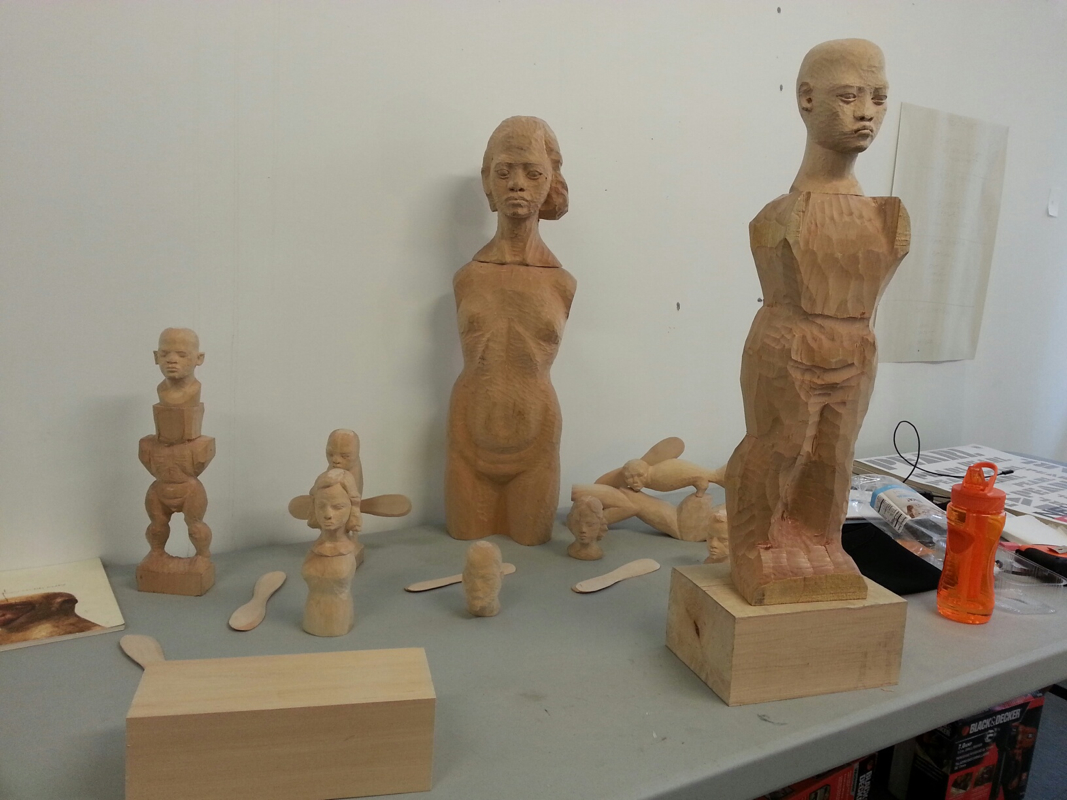
Works in progress at the studio.
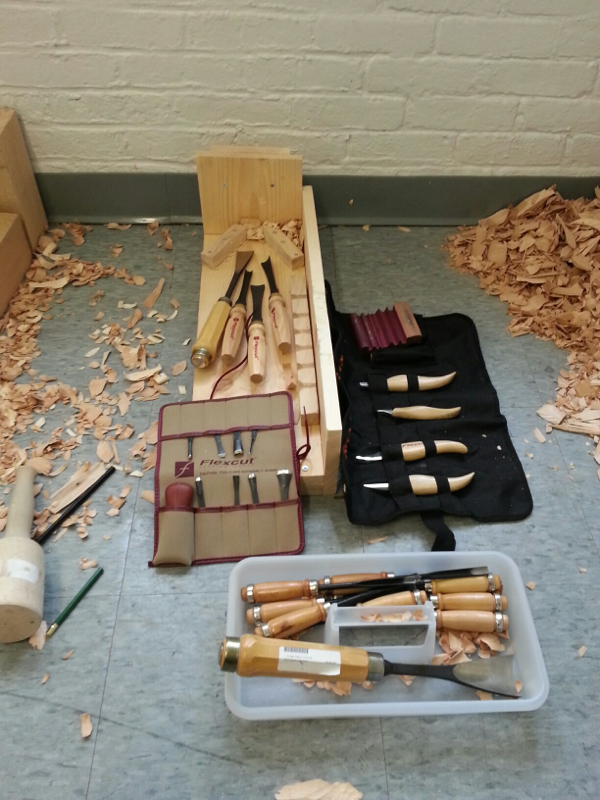
Carving tools at the studio...well some of them. I still work on the floor, Asian style.
I am trying out a new paradigm - and with it new ways of making works - that has been coalescing in the background of my thoughts ever since I started these extended residencies in Europe and now in North America.
This is a paradigm of queries rather than theses. Because now I find myself full of questions, mostly probing verity of stated and assumed facts. And ironically, these are statements that I may have made, but also have clung closely for about two decades.
It started in Paris, where confronted with the images of the Old World I found myself beaming, "Oh so this is what this really looks like". I was, in fact, describing my encounters with all the artworks and structures that Ive only seen in my art history books. Talk about living in a "precession of the simulacra", as most of us find ourselves in Third World and web communities. The goal, or the dream you might, of say of those whose lives were peppered by images and reproductions, is to find passage to see the "original". (A journey often construed as pilgrimage, as I have described it in my last exhibition Curator of Pilgrimage and Paid Vacations, at the Drawing Room last month) So while the "original" work or object is not within our tactile or visceral reality, we live with its emanations and iterations, so to speak. I have written about this on the Mona Lisa experience, where when finally face-to-face with Da Vinci's work I was deeply, er, let down: it was dim, it was small, and it was hard to look at without being elbowed by other spectators. I guess I could say the same with Bartholdi's Lady Liberty, the icon of New York if not the US. But unlike the La Gioconda, I have not the privilege of going to her up close: I am reserving that on my final days. Meanwhile I simply watch her at the same distance every day from the ferry to and from Governor's Island.
Ad so I am all in askance: what observable phenomena can be considered to make this assumption, true? In short, how do I know I am not being duped, or I am not deluding myself? It all goes with: who told you that? what are the sources? And even: Can I just continue with the ruse, as I am anyway having a good time?
---
For close to two decades I have been taught (and unfortunately even taught it elsewhere) with the following theses:
You are a Filipino first before being an artist.
As a Filipino you inherit the task of defining yourself from the gambit of neocolonialism and the colonial constructs of 300 years of Hispanic domination. Likewise you are put to the task of resisting the neocolonial powers that are in ascendancy.
As a Filipino artist it is your task to edify local culture, identity and history: in other words, dig deep and find that core.
There is, sometime in the past, a great civilization of pre-Hispanic Filipinos that was destroyed and assumed by the Spanish colonial masters and churchmen.
Only then, in touching base with these, that you can create authentically. Those idiots who make art for art's sake are just potheads, addicted to neocolonial hash.
Believe it or not, I held on to these theses like a credo. It did not help that I worked as a consultant for a government agency, National Commission for Culture and the Arts.
Then I began to ask:
Why does cultural identity have to be "pure"?
Why look for something archaic, even utopian, and prefer this OVER the present?
Why does cultural research, identity politics take precedence over art practice? Who said so?
Why reject colonial heritage? Aren't these part of one's culture? AND
Why can't I provoke, propose, pioneer cultural introductions and insertions...as a creator?
And finally...seriously...can't I have fun?
---
I used to think that cultural identity is a matter of assertion. You claim identity, you post it to a community.
But culture, being an artefact of communal life of dynamic shared language, idioms, norms, values and habits, has a tendency to become rigid, once it has been demarcated. Like a stray hen that you try to pin down in a certain territory, you place a fence or a coop around it. Thus, here culture becomes a construct, a mental object, a thesis supported or supplemented by objects - in other words, a marketable idea.
And it pains me to find out, in hindsight, that I bought into the whole cultural paradigm when it was in fact more a hindrance to me as an artist. Its like patronizing a really bad barbershop, and you won't know the service is totally messed up not until you try the other shops elsewhere. I didn't know. I didn't have sufficient information. I didn't have sufficient comparative experiences.
---
Patrick Flores has a phrase that I really love: "Preaching to the choir". Its like "converting the faithful" or "selling to the distributor". An ironic redundancy...so thus, have I been really working with irrelevant themes and practice...or am I just preaching to the choir? Time to turn around and face the congregation? Or the people outside the church?
April 20, 2013
I have never appreciated being in New York as much as today.
Three reasons:
Spring
Central Park
and The American Natural History Museum
I spent the whole day actually enjoying all three.
The common denominator of experience is wonder at nature. Environments, ecosystems as as subject have never failed to elicit awe and curiosity in me. For the record this is my firsthand experience of spring. And it is quite good to have New York associated with this memory, for this will be the kernel of a whole complex of associations of experiences and memories of succeeding springtime. The sun felt good, the air is warmer and breathable, and the sight of people lolling about, running, playing on the lawn of Central Park was just remarkable. The last time I was in the Park it snowed! I took the 6 train uptown to 77th st and walked from the Met Museum through the Park to the Natural History Museum, passing through the Belvedere Castle. And seeing families enjoying themselves made me appreciate the day even more.
I spent six straight hours in the Museum, having gone through all its permanent collections and seeing its 40minute show at the Hayden Planetarium. And I still had a hour's worth of walking from the West side of the Museum to East 44th: to digest the experience.
I realized that instead of making statements, I was better (and more authentic) in asking questions. In a way, I felt that majority of my life projects revolved around queries and inquiries. And that the regions of my interests (within which I ask a lot) are the following:
Cosmological/Mythological (The Universe,speculations in scientific and religious pictures of "the whole")
Ecological and geo-biological (The body, The earth as us as iterations of the organic and inorganic)
Historico-cultural (Societies, norms, shared habits, language and symbolic language)
Relational-social (Others, relationships, intersubjective communication)
Personal: History and Lifeworld Trajectories (The Unconscious, Personal prehistory and trajectory)
Consciousness (Phenomenology and Zen)
The American Museum of Natural History offered me the chance to get curious in three of the six regions of interest.
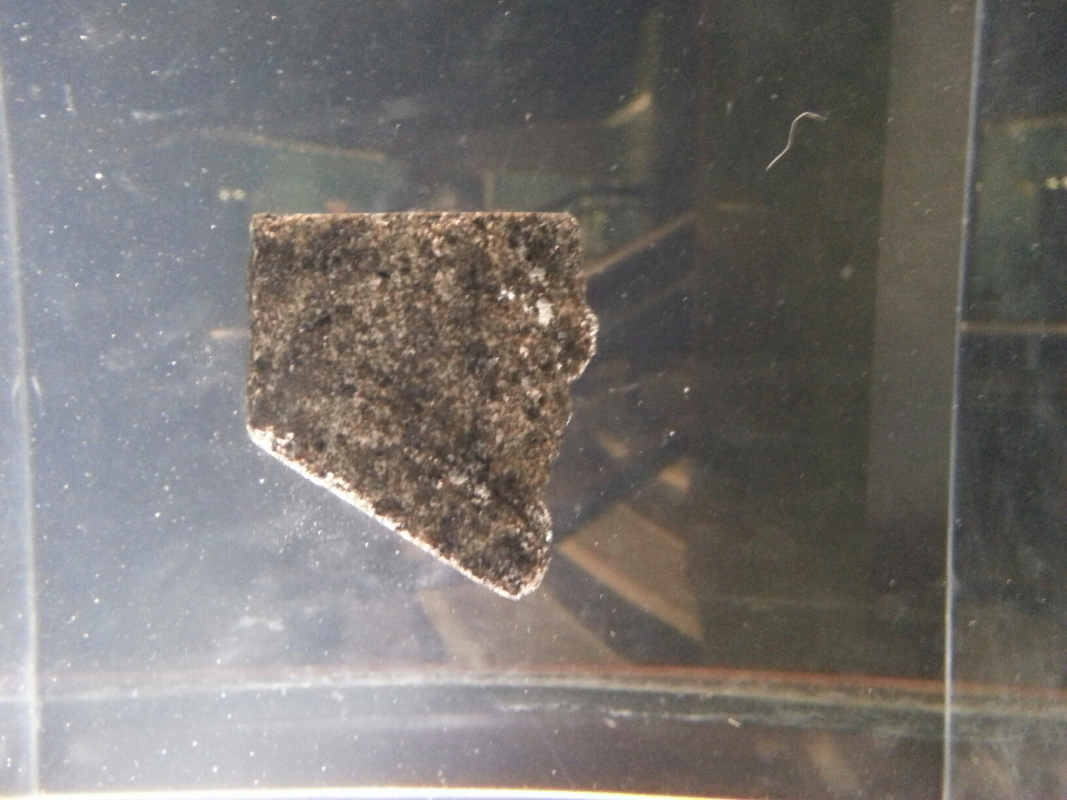
Lunar rock!
April 18, 2013
The final set of carving tools arrived by UPS this morning and I promptly opened the package when I got to the studio at Governor's Island. Suddenly my work became a breeze and I was able to create the primary masses for two sculptures. It really helps a lot when I have the right tools and the right materials coming together. If only I had more production time at LMCC. Its distance from midtown Manhattan is not that far, commute-wise. Its just the effort to go to and from the studio puts a strain on my mind. Just today when I finished with the body of the sculpture I had to cut myself from wandering too far in my efforts as I have to give myself some half an hour to clean up. Then theres a quarter of an hour to wait for the ferry to leave. Between that and the walk to Bowling Green my mind is still in the creative mode but barely. Again, some of the challenges of working with wood carving in the city. I can now understand why this sort of stuff is difficult to pursue in this kind of setting. But I love this knowledge gained this way. Inasmuch as I love the way I discover small things: hotdogs sandwiches, falafels, subway wrestling, hunting for used books and on and on. That is New York coming to me in small shapes and bits - because I cannot swallow the whole city experience in one overwhelming intake, which is quite daunting no matter how you look at it.
April 19, 2013
The carving tools from Flexcut proved to be the answer to my work concerns. Starting yesterday I was able to make two 24" high torsos. Wasn't just able to continue working after 2pm when the guys at the Studio started the first round of presentations of the projects and the works they are undertaking for the spring season of LMCC. It was organized mainly by Elisabeth Smolarz although I know not everyone signed up. My presentation is next week. Hopefully I have some works by then.
The projects presented by Elisabeth, Maria and Karl were interesting. Elisabeth's video work is a social sculpture of sorts where she goes around communities around the world and uses a 100$ in "exchange" for the participant's time to be filmed in white spaces, filled up only with chairs. Her objective is to examine how different economies affect participation (in India, there was a crowd, in Japan there were only three). Yet if I have to be critical about this I am quite disturbed by the fact that here we have a project whose authorship rests on the artist while the "activity" is done by others. The fact that currency is involved means that the work is indeed capitalist in its construction, and imperialist in its treatment of "various subjects" from different countries using a "global" perspective as a veneer, while allowing the work to present people from India, China, Japan, Brazil as cultural specimens in a controlled white-space environment. Yet Elisabeth seems concerned about the imbalance of economies between G8 and non G8 countries.
I am critical of these socially-involved art projects because they all seem to take on the structure of an ant farm. The art project is the glass box and people are the few ants that are introduced into the environment and their interaction - which becomes spectacle - is happily observed by us from the other side of the glass box. What is construed as a position of the artist-investigator-activist is a cultural construct of an economically and technologically empowered society that sees the different lives of "Others" as "cultural diversity". In my view this isn't cultural or artistic dialogue: its cultural diplomacy and all its underpinnings of unequal power relations.
Maria's project involves a sense of personal danger when she uses covert means of photographing and documenting secret American bases and their activities in Italy. Now this I respect: the artist who goes into the territory of the subject and becomes part of the population excluded by a security fence. I love the way her curiosity guides her to document on film and video crashed drones, relay stations, covert military missions.
Karl's project involves his fascination for the rave culture of the 90's and the sense of utopianism that has long since died with the music. I love the way he approaches the idea of this feel-good utopian vision, pursued by uncommitted urbanites and yuppies of the last century, bolstered no less the hopes of the coming millennium, only to disappear overnight with resounding financial crashes in Thailand, Malaysia, Japan, Europe and the US. He seems to be an archeologist of the urban past, and discovering the MTV generation as a species, decides to come up with posters, and an animatronic monkey-alien. What I like about this project is its sense of authenticity. Karl seems to live it, and was born into it.
Gleaning from these projects I get a sense that my reactions betray the kind of aesthetics that resonates with me. I am interested in (and value) art projects that are "invested" by the artist's own life and convictions. I love the kind of art that makes the artist gets his "hands dirty" and even his life equally soiled. And I delight in those works and projects that "reveal" the lifeworld within. These do not need a central theoretical framework: the work suffices. So I don't really understand why some theorists need to come up with ideas that emerge from collecting artistic specimens and then proclaiming a new aesthetic. All cerebral, textual overarching ideas about art destroys the encounter. All texts should be footnotes to the work, not its herald, nor its promoter. Only imperialists think of art that way...
Where do you locate yourself as an artist, both geographically and professionally? It is actually a curious question, especially for those who are located in the mainstreams of the art world, that is in cultural capitals of Europe and the US. They are born, grown and honed into these systems of art production, valuation and presentation that it seems the question is really about how to stand out, make one's work visible, distinct among others. But in post-colonial, post-war or politically emergent democratic societies, you cannot be but find yourself in the periphery, at the banks where small eddies of swirling water can be descriptive of the art scene goings-on locally, which are but the fringes of the wake of a larger surge of capital and activity happening elsewhere.
In New York I am located in a position to observe that "elsewhere", here, now. If I were a storm-chaser, then I have just parked my car under the eye of a hurricane to watch the surge, the windspeed at its epicenter. People back home assume that I'll be looking for opportunities here to catch some streams, to be part of the maelstrom: I'm not. Because as an artist the choice and the decision to locate yourself is not a matter of market opportunity alone. Inasmuch as squatting near the security fences of a Manor House does not make you a resident or even a lord, being near or even in contact with the community of contemporary art (powerbrokers and all) does not create transfers of power and prestige. Its just plain silly. You cannot teach bamboo to grow in an apple orchard just because you put it there.
Like transplanting a tree from the tropics to the north, one should consider: can the weather, the climate that made me flourish also do the same elsewhere? Its a matter of intuition and gut-level sentiment. But one can argue that human beings can overcome adversity and cope, it has proven effective. But again, how many immigrants, how many struggling artists like Jean-Michel Basquiat have the golden opportunity to make the cut, somehow and blossom?
It is the height of supreme hubris to say that anything can be willed, anything can be mastered, anything can be subdued, including all organic trajectories of nature. If anything, Hurricane Sandy has reminded this metropolis that all those expansions of lower Manhattan to create more real estate does not matter to the sea. Water knows its own, regardless of what the heck we think. So too, the movement and persuasions of what we can call the soul: it is organic and knows its own level and range. Rather than force this specimen, this soul to mutate in the company of cockroaches and odd jobs, allow it to find its own range where it can create in peace. (Often I wonder if this is the reason why a lot of so-called contemporary artists have either dystopian, apocalyptic and neurotic content in their work: they are simply out of context).
I met up with a friend, a Filipino artist, who prior to his migration to the US five years ago was a key figure among the progressive groups of painters in Manila. I have encountered a number of former art school associates and acquaintances telling me the same story that they cannot spend too much time to pursue an art career in New York simply because they have to find some employment or two. I expected him to say the same thing but to my surprise (and admiration) he said he is indeed a full-time artist based in Jersey City. As of late, he still manages to use art as source of dependable cash flow, staggered as it is. But like all other artists working in the highly competitive scene whose gravitational center is somewhere in the vicinity of 5th ave in Manhattan, he thinks there should be more opportunities, more openness and more interest towards up-and-coming or relatively unknown artists. Meanwhile a long-time Brooklyn-based Filipino artist is coming to his own, being featured in the NY Times and in museums in the city. Then in the same conversation a curator from Singapore joins in and basically extolls the wisdom that you have to know your community first, before you can claim them as constituents of your work.
I agree on this principle. Know your community. That is what I mean by locating my practice in geography and profession. Artists assume that their practice gives them access to a conjured "community of connoisseurs" somewhere gathered in corners like the Rockefeller Center or the board rooms of the Guggenheim or at the back offices of big-name galleries. This exists only at the same level where Sasquatch and the Loch Ness Monster hold their domain: nowhere. But in art schools in the Philippines, this is the Canaan of all their journeys. It took me a while to realize that what is considered "international art scene" is a pipe dream, or a marketing promise. What truly exists are patches of communities of networks where art is studied, taught, transferred, eulogized, evangelized, sold, traded, lost, found, validated, devalued, contested and won. And most of the time all these communities share relationships and tangible exchanges. They are, in fact, just people. Plain, human-all-too-human people, trying to transact their business with other people: the vicissitudes of taste.
We are not in Babylon.
Nikos Kazantzakis once wrote that our lives are nothing but drops of blood that form parts of the portrait of God. And Joseph Campbell asserts that at the end of all our life journeys, the only thing that matters is the story that we can share and leave behind. If there is anything that resembles a response to these two soundbytes I can muster only this: that my story, my share of the face of divinity, will be told, in carved wood, with marks of chisels. Other than this I have nothing else of value to offer.
I realize now, after more than a month in New York and getting confused with all the many things it has to offer for an artist like me, the plenitude of experience appears as dense as wood. It offers resistance against any preconceived notions as it conceals all sorts of surprises. Yet as a woodcarver I know that resistance is the material, not wood. The good carver knows how to work around regions of fullness, and density and resistance. Often the challenge of the carver is how to form a carved path that embraces the whole matter without too much wastage, and allowing volume to play with light and shadow. The carver's mentality is one of subtraction and elimination. And with material, as it is with life, I use the language of elimination, of overcoming the superfluous, until I have only the useful mass of experience that allows play with the internal and external elements of existence. Therefore I need the practice of carving, not just to work, but also as an instrument of comprehension, of phenomenological engagement.
It appears that this approach runs counter to the culture of aggregation and accumulation that marks post-industrial life in the metropolis.
As we say in Filipino, I am contra pelo, to New York City.
Because the language of the subtractive, of wood and of the organic elimination isn't top news to a place where everything is available. Yet, instead of feeling contra pelo all the way I take the advice of St. Francis of Assisi and acquire the mind of a monk in the middle of the city. To be the spoke on the wheel, he says, is where the mind should be, and not on the periphery where you are tossed round and round. Because any city like this one distraction is de rigeur, on the way to a sale or trade.
Case in point: three guys in the No. 5 subway this afternoon suddenly began a loud exchange about animals do not ignore each other. Then followed a performance on drums and the bantering of the guys with some well-placed accomplices in the crowd. The ruse works and they get money from some people in the car. When some refused, they were told that animals again do not ignore each other. When they left, I felt like hollering after them: True, but the animals that take notice of and watch over others are usually predators.
It is not that I do not appreciate street performances. In fact in Paris there's nothing more fascinating in the Metro experience than listening to Bach or Saint-Saens resonating in the tunnels. The difference between Paris and New York subway performers is that the former knows the art of enticement, the art of drawing people in. New York subway performers like to use subterfuge and spectacle - sleight of hand and bombastic surprise on the senses. Well it cant be helped I guess. The good ones are unheard and unseen. Pardon my preferences, but I do hate when I feel my senses assaulted, especially with loud voices with phrases dotted with words like "fuck" and "shit", two most common words in New York vernacular (in addition to "okay" and "yeah"). And music is something you cannot possibly stop filtering into your system. When it begins it resonates as if from nothing and its vibrations pass through your body.
Im such a whiner. I know. Remember: contra pelo.
My gallerist called me up last night and told me that it seems while in Europe I was nothing but inspired (read: infatuated) while in the US theres something that's eating me up. I told him that everything here is up for some sort of "sale"or market. (Quite apt for a city of merchants). All cultural experiences - in sports, news, technology, art etc - seemed to framed in all sorts of shop talk. And I am not easily convinced. No amount of shop talk, to my reckoning, can match the weight of tradition and history. Yet so hung up is the metropolis in selling the future, the new as BETTER, (Get a new car, its better - ignore the fact that many new models are recalled. Get a new house, its a better life, disregard the fact that you have to work double time to pay mortgage) I say, well f***, (ode to Ginsberg) dude: who said new is better? Its simply, NEW. Who said contemporary is better? Its just a marketing promo period. Dude, Lady Liberty's slip is showing and I think its not by coyness or accident. Why do I get the feeling that I am being shoptalked all the way, every way, all the time?
Here I go again. Contra pelo. Be on the hub, not on the wheel.
That's why I relish the time I go away from Manhattan towards the peripheral boroughs, to the edges of the city. Yesterday my uncle drove me and his family to Long Island and I simply went gaga over this small town of Roslyn for its sense of quaintness and its proximity to a duck-filled lake. We found our way to Long Island Sound facing Connecticut. The sea was choppy, noisy, but delightfully peaceful. This is what I like about nature or places in the suburbs, and in the provinces: life simply is. I have never encountered a mountain that was selling itself or a sea that was giving shoptalk about its breeze.
Now its just a matter of taking back the sea to East 44th st between 1st and 2nd avenue.
So, like a carver that I am. I have taken away the superfluous: the sense of gimmickry and spectacle (in addition to curatorial and connoisseur patronage) as an excuse for bad art, the shop talk of the new as better, the boombastic Barnum-and-Bailey sense of what is considered entertainment, calorie-counted food...
I have retained what is (at the moment) expedient and essential to my wholeness: I guess in many ways I think thats how I survive the sense of estrangement in these months away from home. I carry within me the image of the beaches of Ilocos, glaring in the heat of summer, pierced with the smell of brine and coconuts, gay with the sound of the distant ocean rain and the sonorous trumpets of a funeral procession. I also take with me the diesel-clogged streets of Marikina, Cubao and Makati, inasmuch as my tongue retains the saltiness of pork rinds, fishballs, bagoong and the suicidal saccharine tendencies of sago, palamig and halo-halo.
That is what I call sculpting an experience.
Oh hell. In journeys, such as this one that I am doing for the sake of my career, its not where I am going or where I have been. Its all about what I take back home. For a Filipino, this sense of pasalubong-giving, is what defines who we are. And I cannot help it, as a habit so deeply ingrained in my soul. As essential as f*** and sh** is to a Manhattanite, p***** i**, I say. I cannot but be, Filipino.
After a week of asthma and two days of recuperation, I sought out the sea and found Coney Island in Brooklyn. It was an afterthought, though. Seeing the sun glaring through my window this late morning I decided to take a walk, a casual stroll at the west side, along Greenwich Village. Found myself at Waverly Place, staring at psychic shops, fantasy stores and miniature houses on a public square dedicated to the soldiers of World War 2. Reminded me of spirit houses in Bangkok and Kuala Lumpur. It was said that having a spirit house in your yard provides residence for wayward ghosts that can cause illness and trouble when they live with the living in their domicile.I am reminded of my own series of works called Aniwaas in 2009 where I made rebultos with the intention of having them "house" memories and forgotten presences.
The sunlight encouraging (accuweather predicted rain) I took the D train all the way to Stillwell and Coney Island and took a brief walk until I am faced with the beach, the boardwalk and the sea. I immediately approached the onrushing waters of the North Atlantic and was met by an eager bunch of seagulls, carrying mollusks and dead crabs in their beaks.
The sound of the sea brought me a sense of home. The North Atlantic speaks the same language uttered in rolling tongues by the Pacific Ocean back in the Philippines, and has resonances of the West Philippine Sea on the shores of Ilocos. But unlike all the seas that I have known, this one is frigid cold. When I picked up a clam shell and washed its brown sand off with an eddy of water near a jetty I am struck by the fluid chill that lingered with the breeze. (I remember the Titanic, resting at the bottom of this body of water, some miles away.) From where I stood I saw the outlines of Philadelphia and sought to see Puerto Rico in the far horizon.
I walked and found the gulls cleverly softening up their food by flying high and dropping their clams and crabs on the shore or the rocks to break them. One gull flew with a tangle of clams and fish and resourcefully dropped the load on my head. I had a cap on, so it might have taken it for a rock. Who was that Greek philosopher who was struck by a turtle dropped by an eagle? I tossed the fish to Jonathan Livingstone's cousin and the stuff smelled in my hands. (Hand sanitizer is always ready).
A young couple with a toddler asked me in French accented English if I can take their photo. A woman in bright yellow jogging attire saluted the sea with a standing yoga pose. An elderly woman sat on one of the jetty rocks and with palms up, meditated on the beach. Behind her a man had spread a blanket on the sand. His things in and bag were safely clutched by his feet, and his sleep was quite oblivious, peaceful even, as a child ran past him, kicked sand all over: he was unmoved.
I tried my best not to face the north where the boardwalk, the rides and the residential buildings were. But through them I had to walk since I decided to go and see the Aquarium. Sadly, because of Sandy, it was closed. So I made my walk past the food shops and found a small souvenir shop where they sold action figures of Carl Jung, da Vinci and Mozart. The three inch plastic Jung now stands guard over my desk, pipe in hand. I bought two and decided to go back some day with my family and buy the whole stock. The Jung Circle Center in the Philippines (of whom I am an honorary member) will be quite amused with this.
I found some sense of childlike joy when I observed the simple physics of the amusement rides. Perhaps under all the layers of personal history is an eternal child (puer aeternus)? I would not be surprised. Also took back to Manhattan with me is a classic wood trapeze toy.
On the way back on a late afternoon, (with a pocketful of shells and toys) I knew I found something. I think I know what I will be doing as a creative project. The sea had spoken.
Today is Queens day. And I loved it. I should have been based in Queens! Patrick and Nuki were right: it was an entirely different universe that borough.
Ate breakfast at Jollibee in Roosevelt Ave in Queens. A five dollar chicken meal that sent me back home in a trip of greasy afterthoughts. I was glad that the servers and the majority of the guests were all talking in various Philippine vernaculars. The air was unfortunately thick with evaporated cooking oil and I went out smelling of the chicken that I just ate. No worries: I got my fitting one month gift of welcome- a sense of ground and center that comes from rootedness.
Hopped on the 7 train back to Court Square to see Sculpture Center but found it closed for ingress. Got back on the same train but not before loitering around Long Island City and thinking, this is also a nice place. I got off Queensboro and took the N train to Ditmars and got off Broadway. My intention was to see the Socrates Sculpture Park before I go to Topaz Arts on the 39th Ave where Bencab will be having a talk.
I discovered to my dismay that the Sculpture Park seemed to be recovering from Sandy as well. Many works were missing and I couldn't help notice that the works installed there are quite recent: all dated 2012 in fact. One of the works is by Tamar Ettun, my next-door neighbor at Bldg 110 at LMCC. It was missing a parachute or a balloon.
At Topaz, I met Bencab and Annie; both were surprised to see me there. I would be surprised to see myself there as well. Ged Merino was also there and Racquel and Mideo came in after an hour. Ongoing show were pieces by Manuel Ocampo and Gerry Tan. Quite interesting work, but a bit dated for me. Didnt see the video showing by Ben, and instead I spoke with Ged about a possible show at his gallery. It may look good on the resume that I did have an exhibit in the US, even if it is just in a small space like Bliss. Thinking of July but I might probably figure out a May event.
Said my goodbyes and went out with the intention of going to 69th St where the Filipino stores are. On the road I met Bill, who was one of the guests of the exhibit. He says he's a journalist and he wanted to know what the Bulul figure in the Bencab Museum brochure was. He said Ben didn't talk about it and he thought it was his work. I explained that it wasn't and it was part of his collection. Bill said the people weren't very friendly and he would have wanted to ask. He wanted to sit and get coffee but I declined his invitation and gave him a card, saying that if he wanted to know more he could just email me or call.
At 69th I felt quite at home. It was like I was in an old Cubao arcade underneath the LRT. Hehehe. Bought my Filipino supplies of Datu Puti vinegar, toyo, patis, bagoong, Ligo sardines and a helping of Boy Abunda on the telly. Came out beaming with happiness: it did not cost as much as I anticipated. Resolved: I am doing my groceries in Queens from now on.
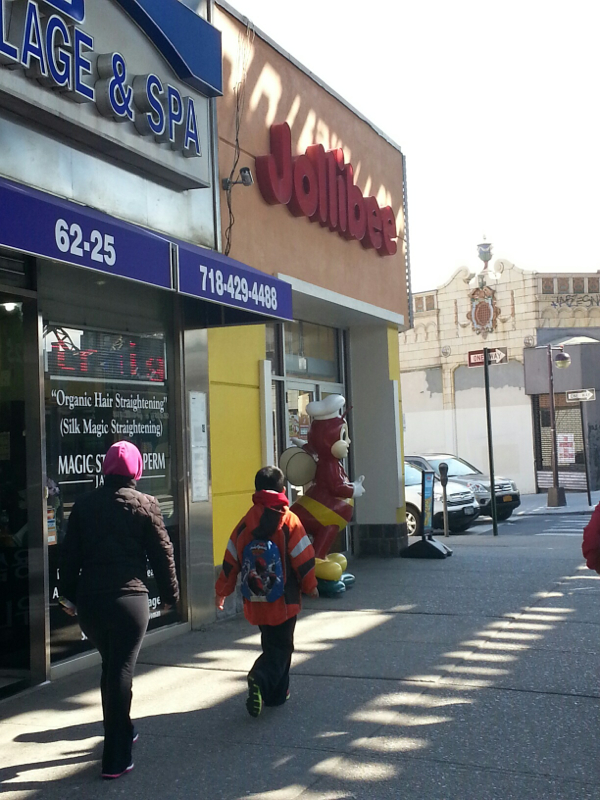
Jollibee!
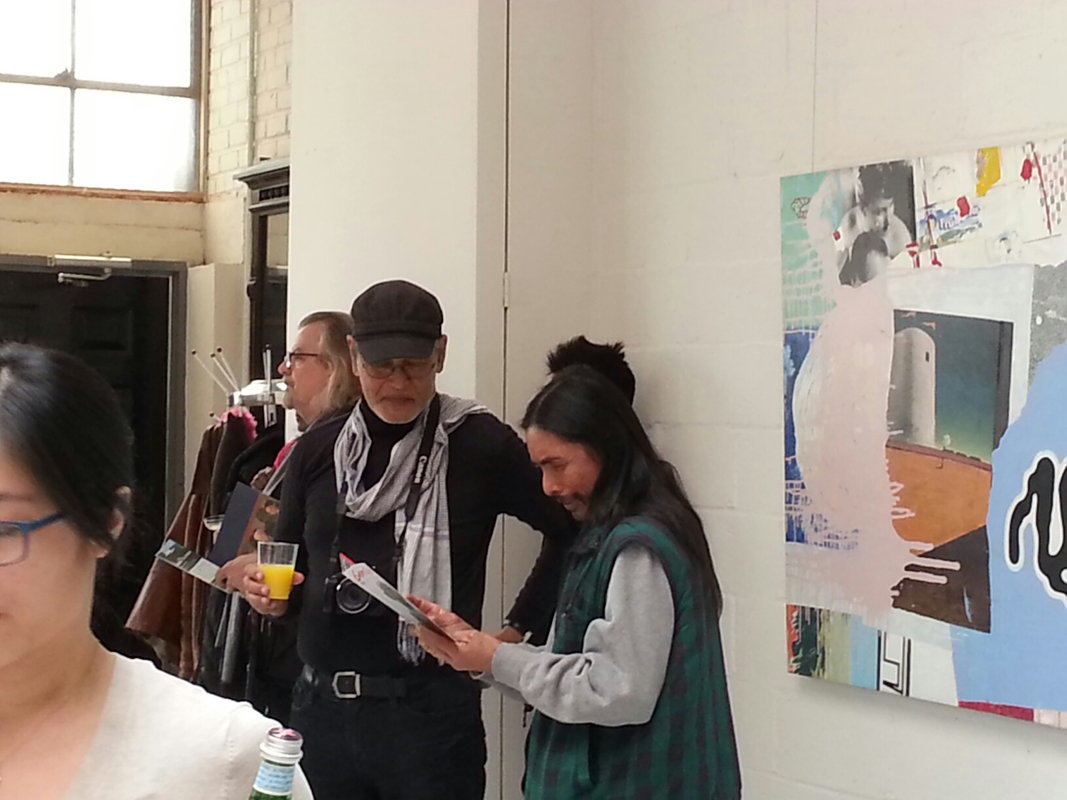
BenCab at Topaz Arts
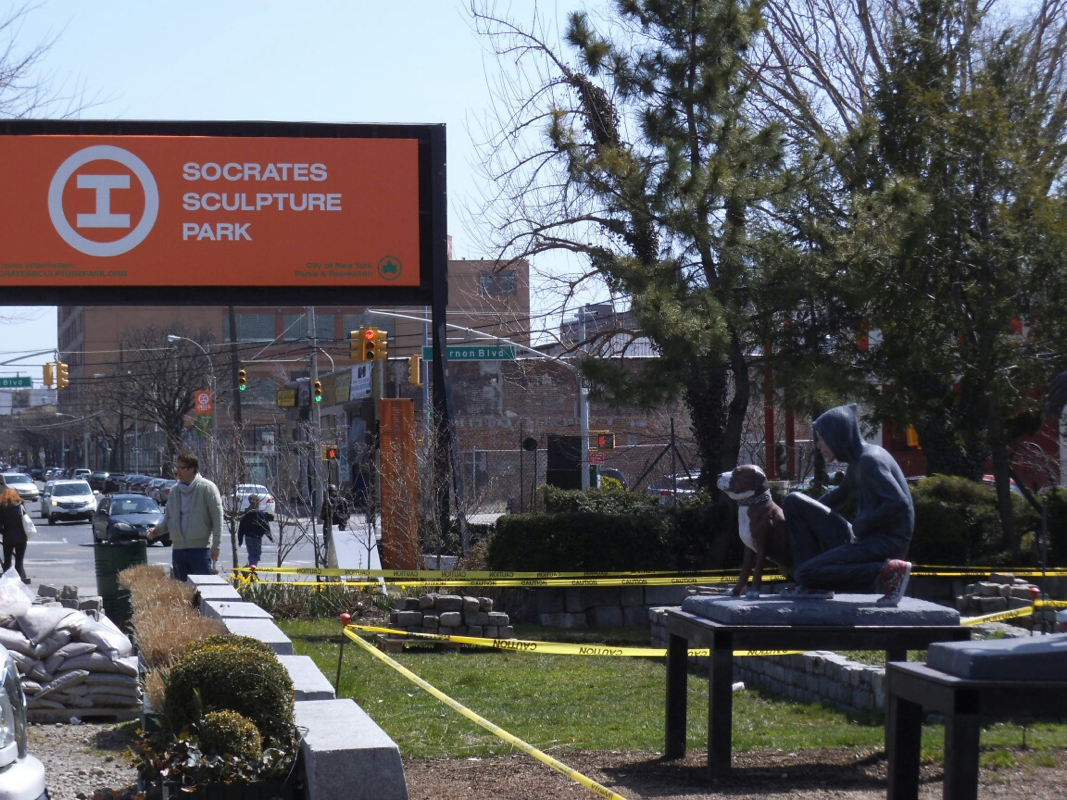
Sculpture park
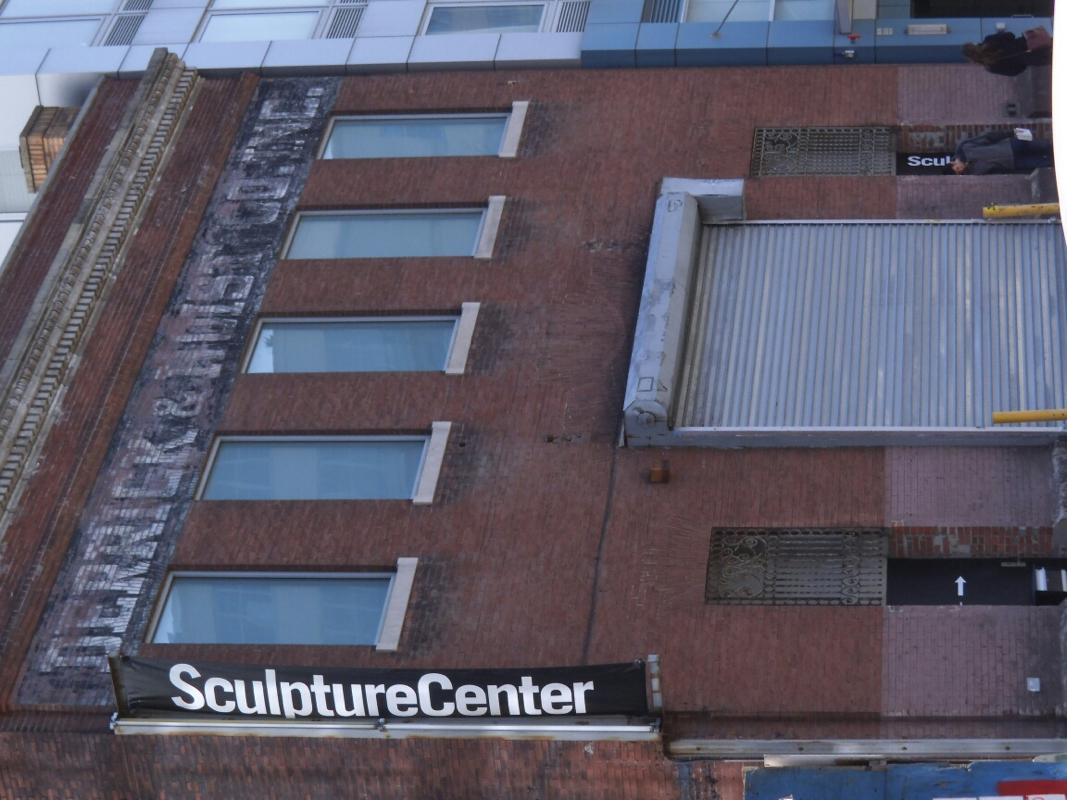
Well it was closed for the day
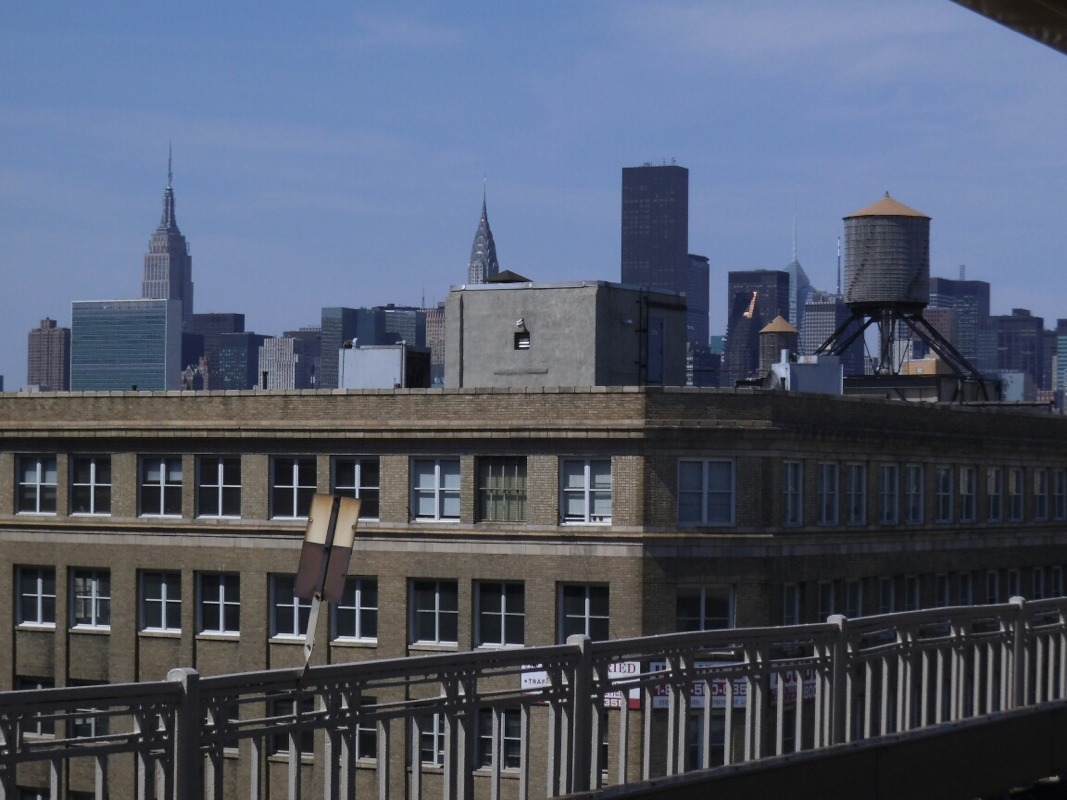
Three towers: Empire, Chrysler and water
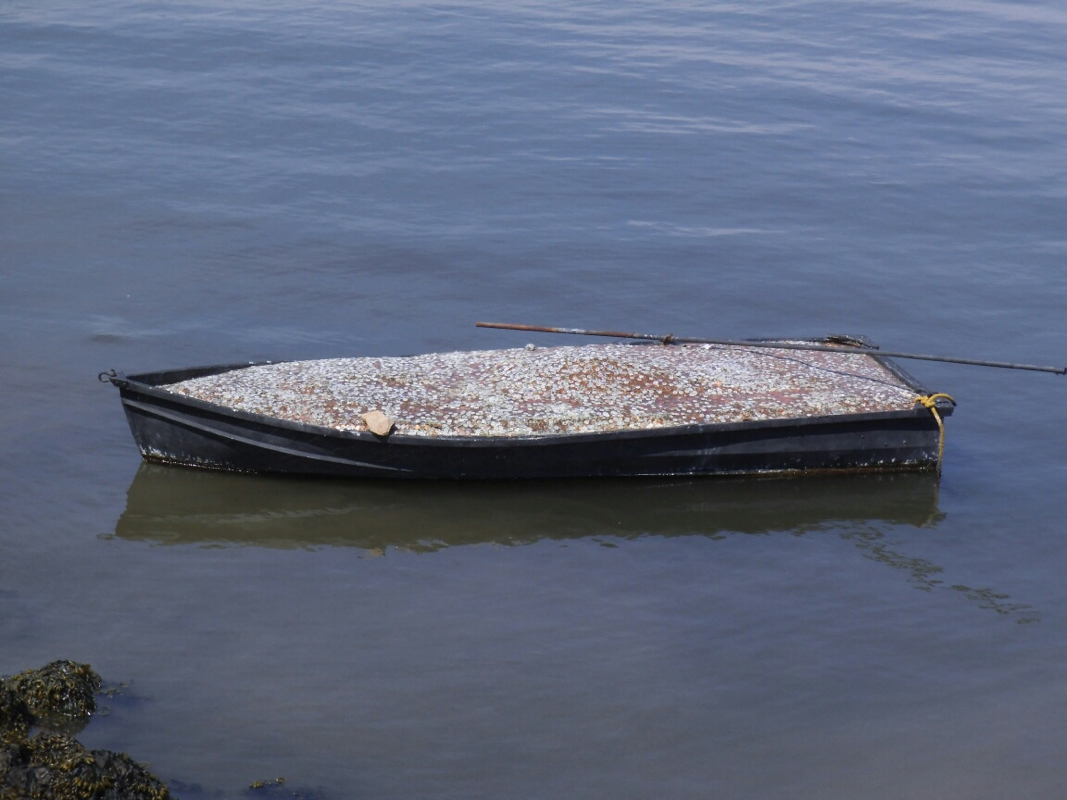
A sculpture of a rowboat loaded with pennies...
My first box of large basswood came at the door when I just finished heating my vey first successful adobo in NY. (Using LIME JUICE and not vinegar). Never felt so relieved...and deliriuosly engaged.
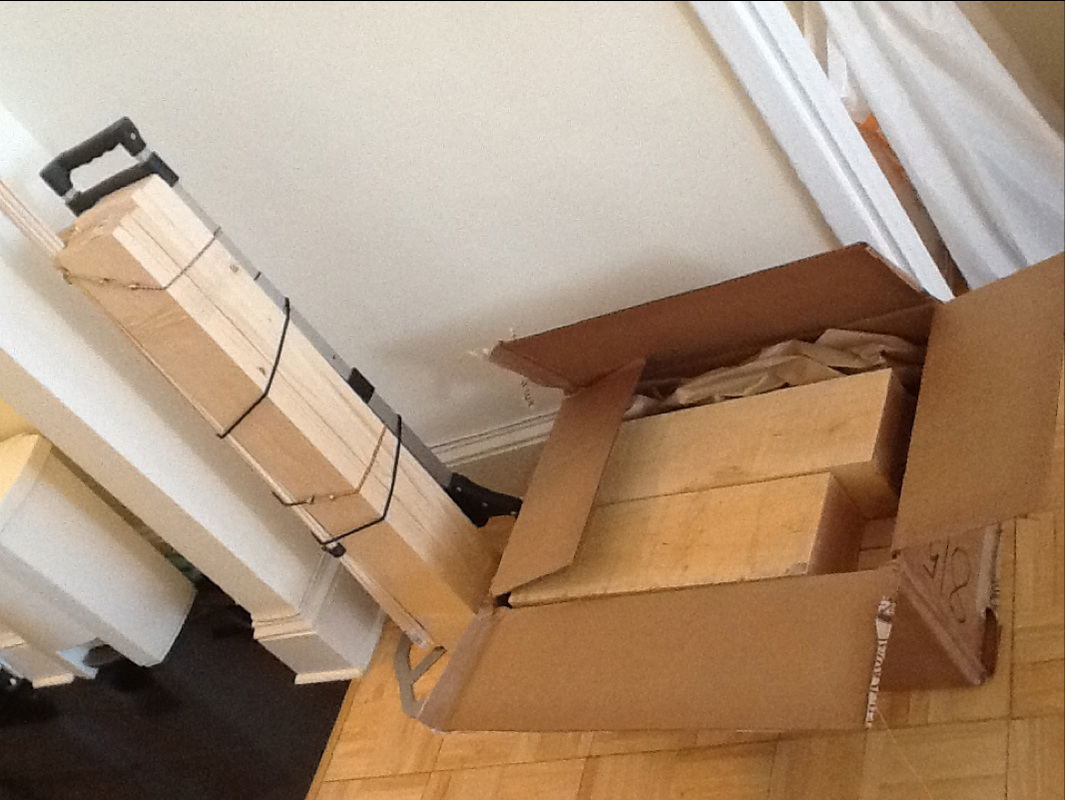
First shipment of large basswood blocks. Second shipment on the way. Cost me a small fortune (equivalent to buying an Ipad) but hey its worth it! Its the price of my peace of mind.
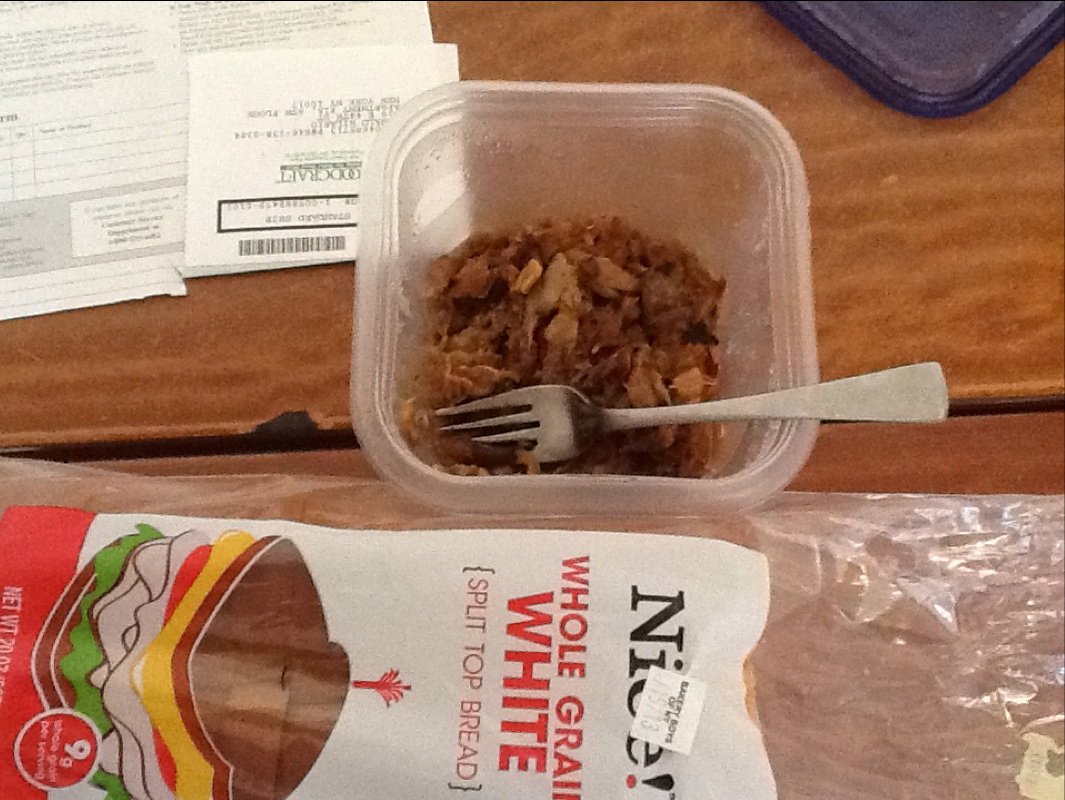
This is my version of adobong matanda, a variation of adobo that has a shelf-life of 3 days sans refrigeration. The trick is to let the thing stand for a day or so to allow amino acids to break down. I did this with lime juice instead of vinegar. Hell it works!
|


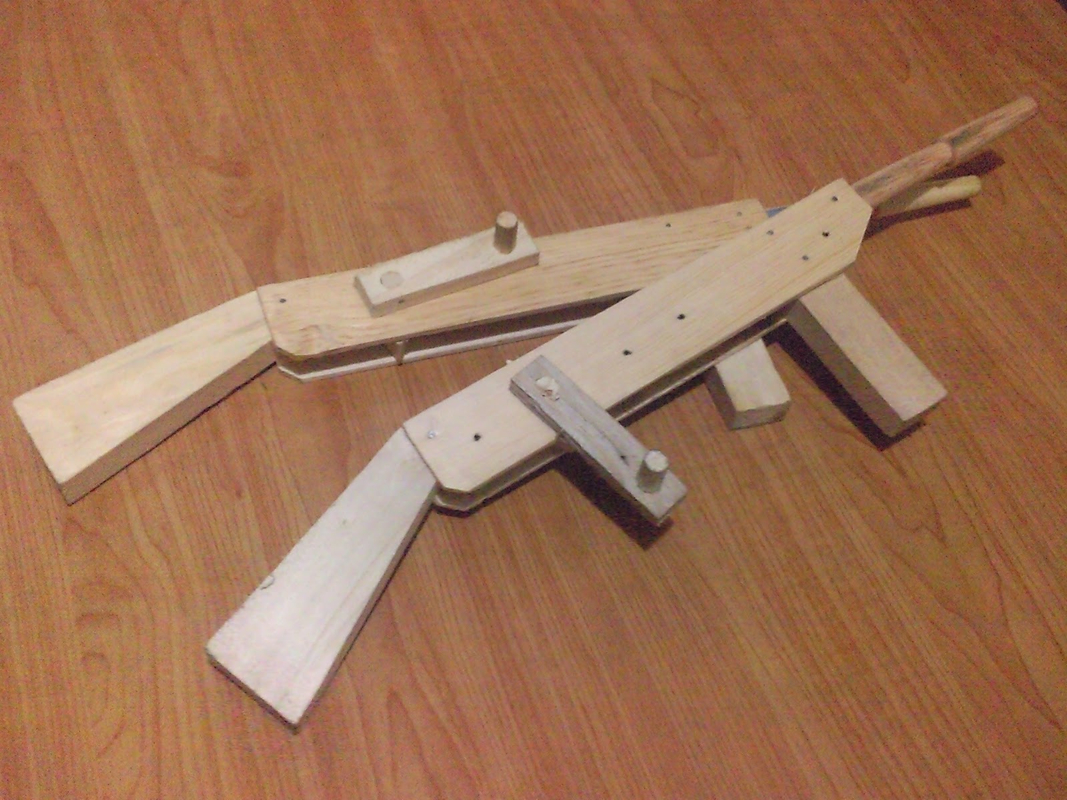
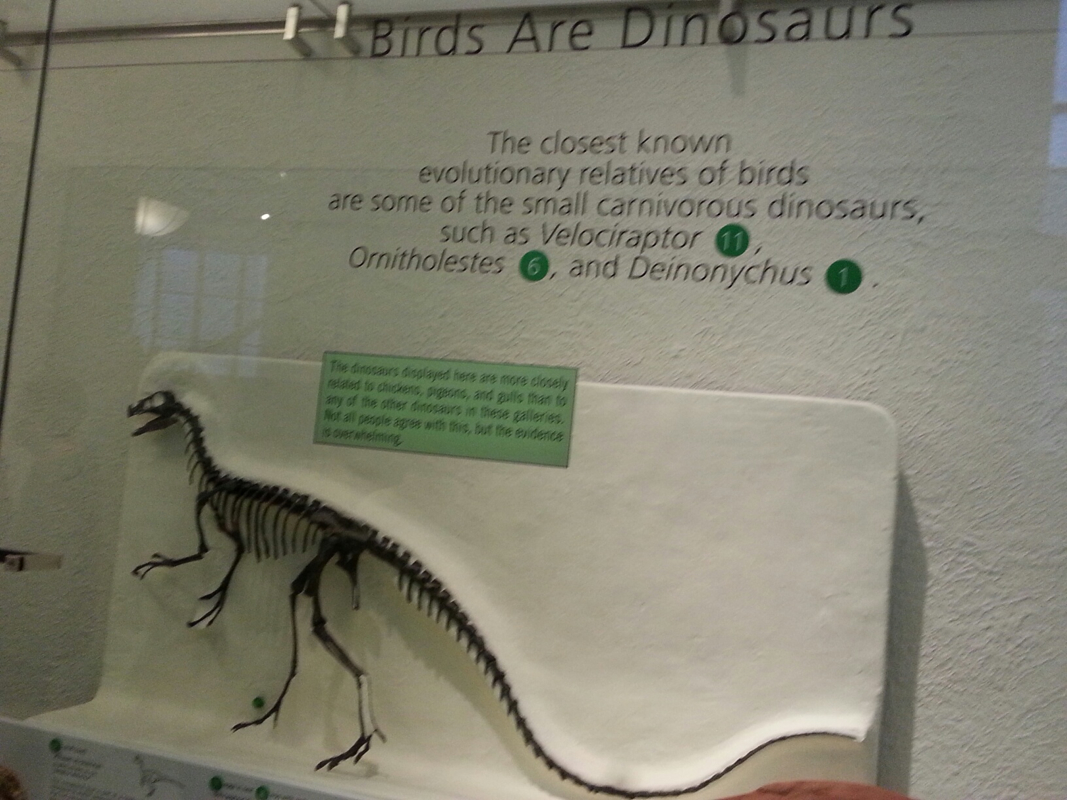
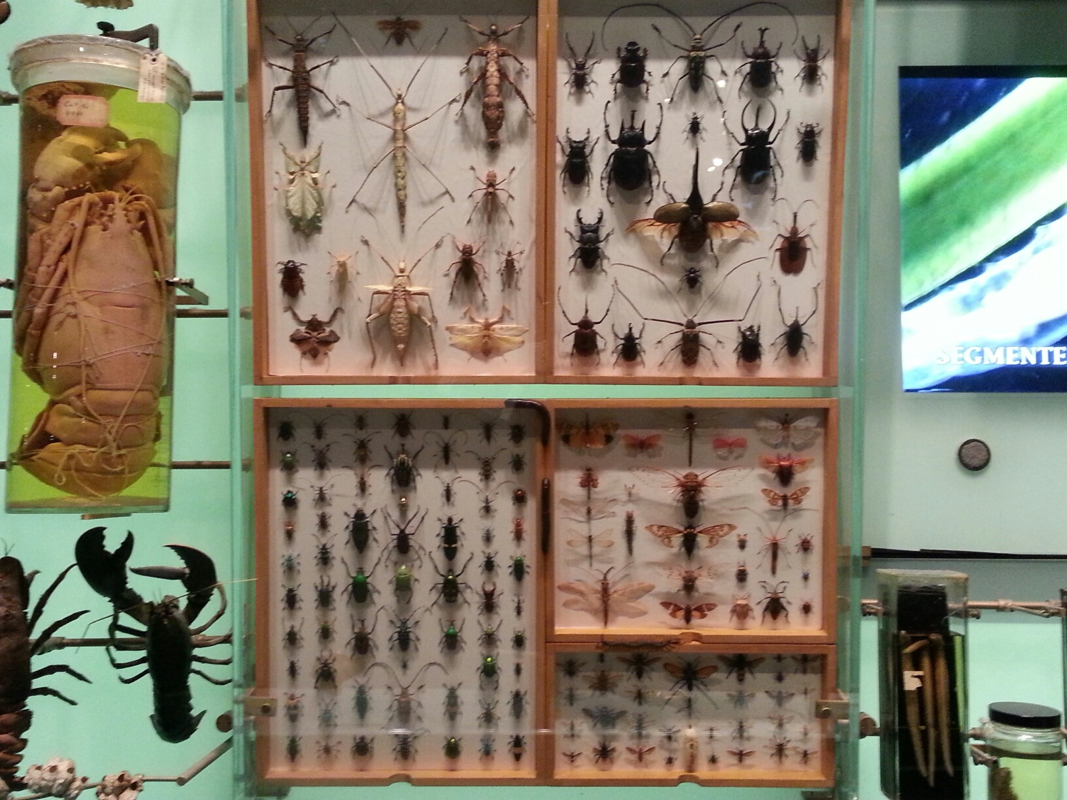

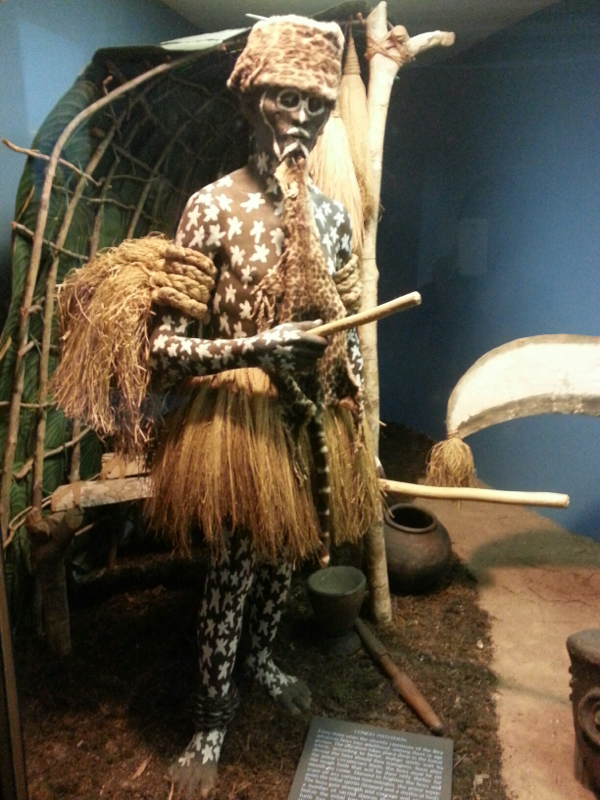
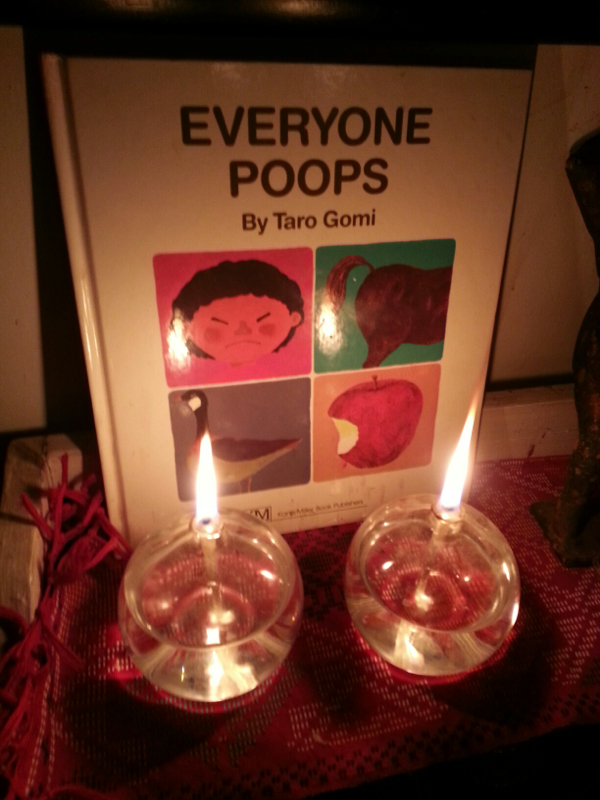
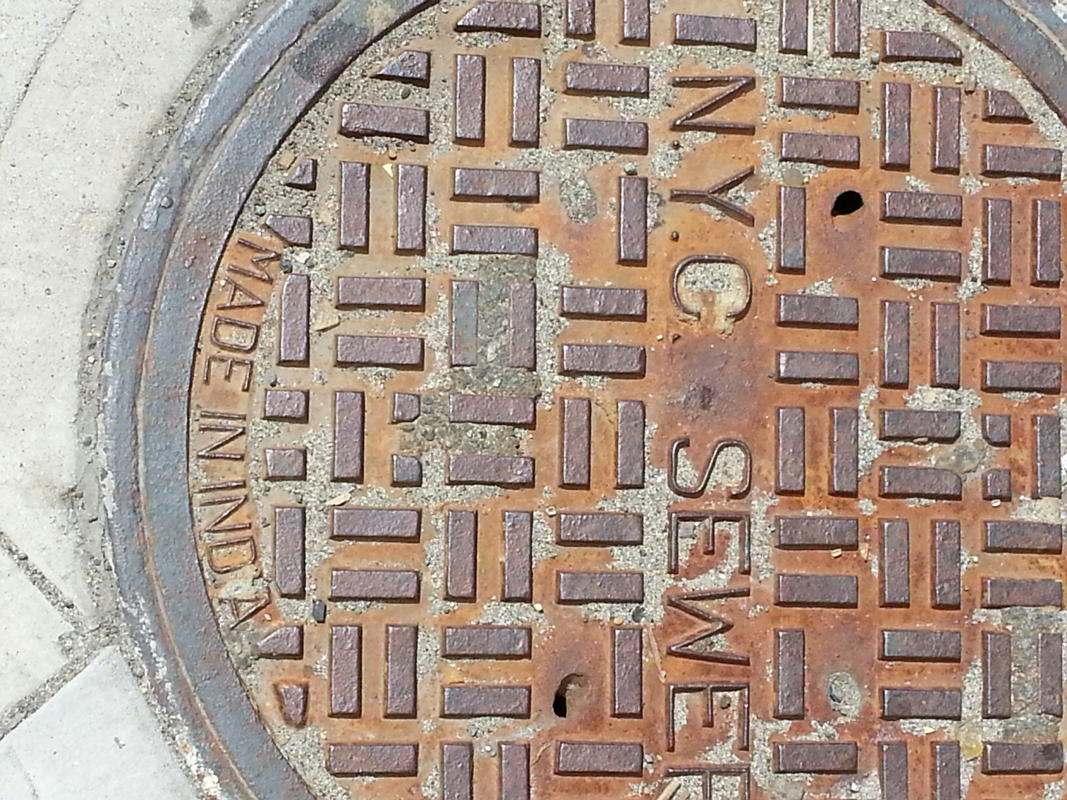
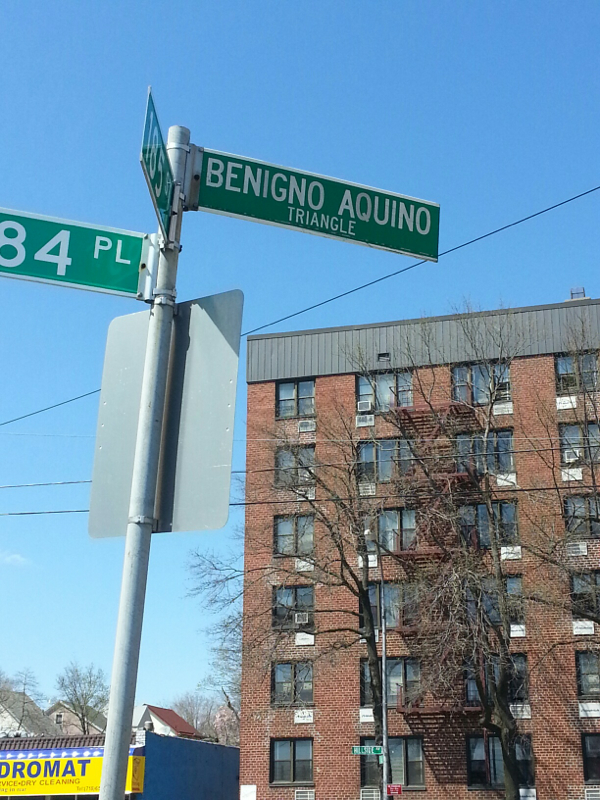
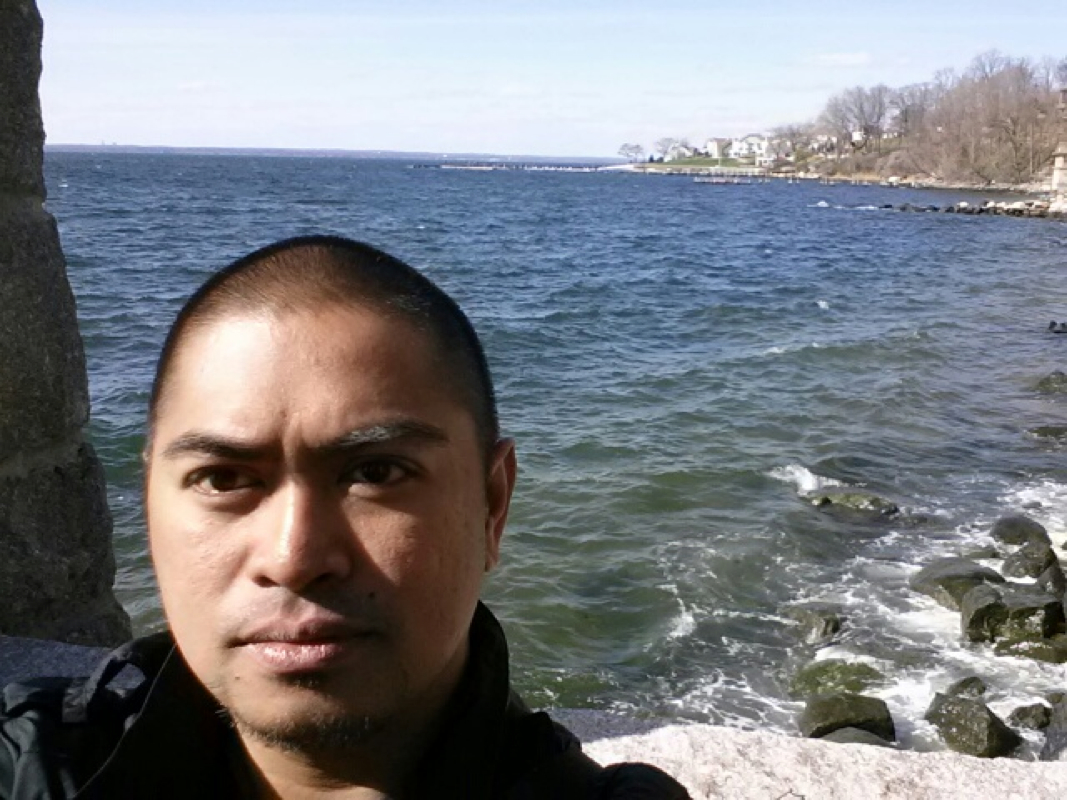
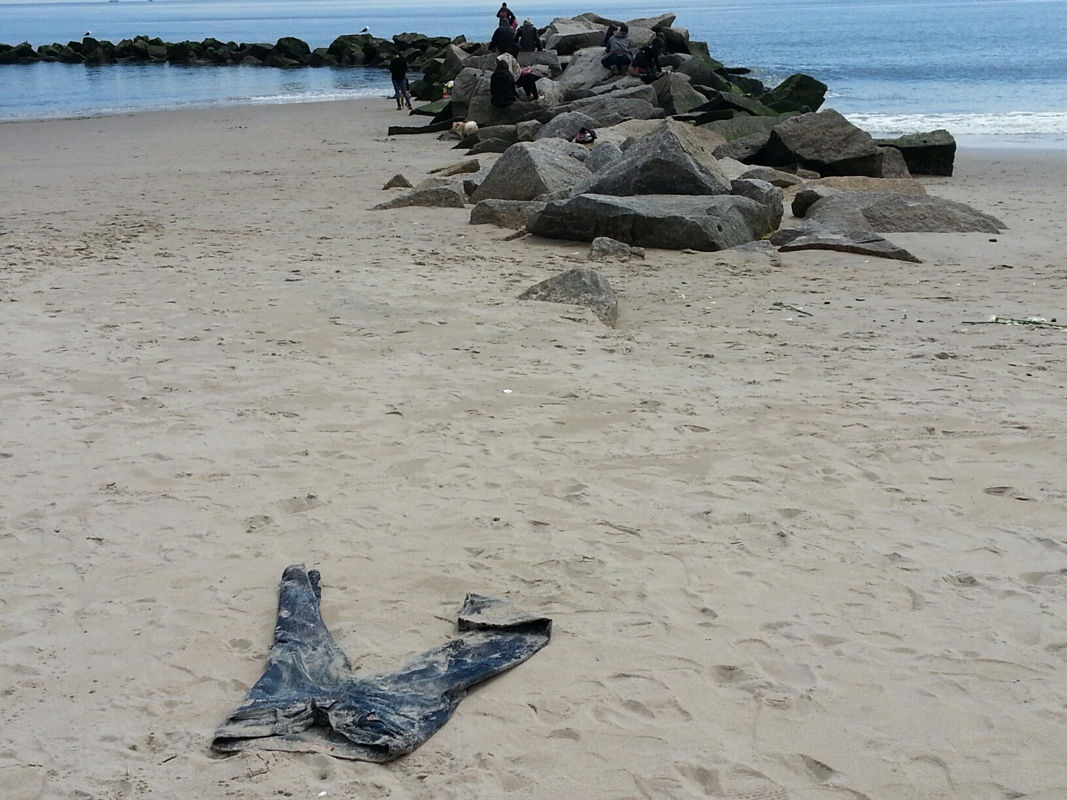
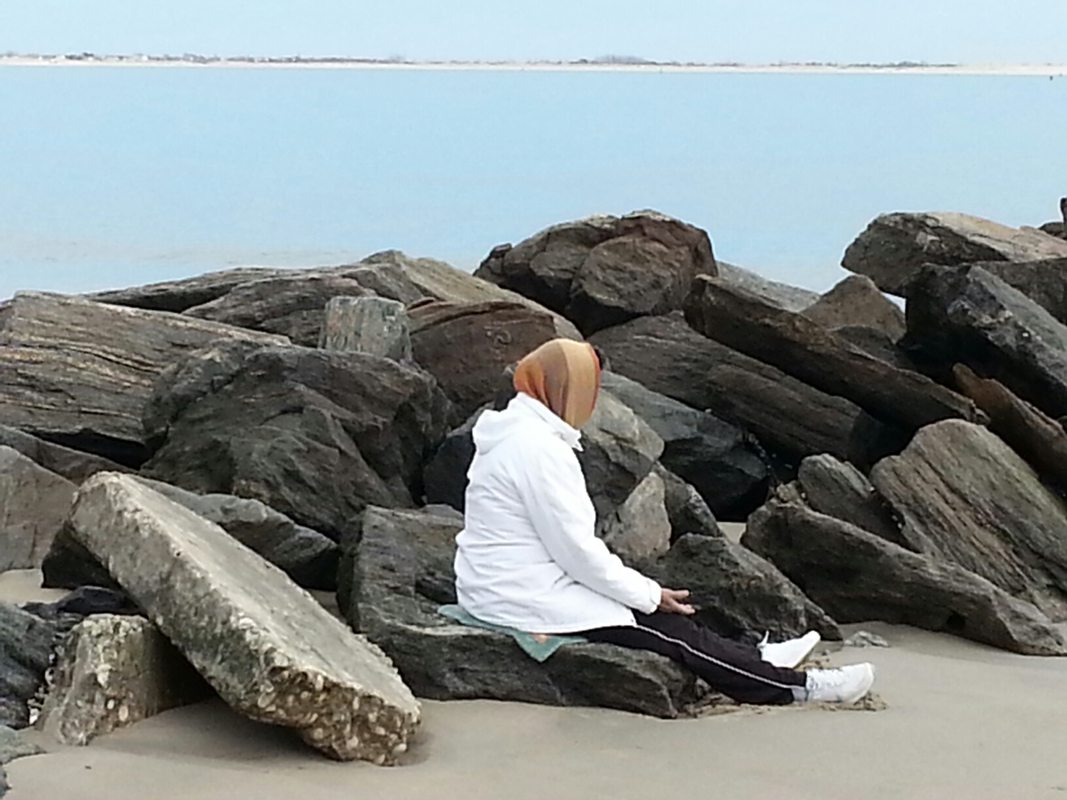
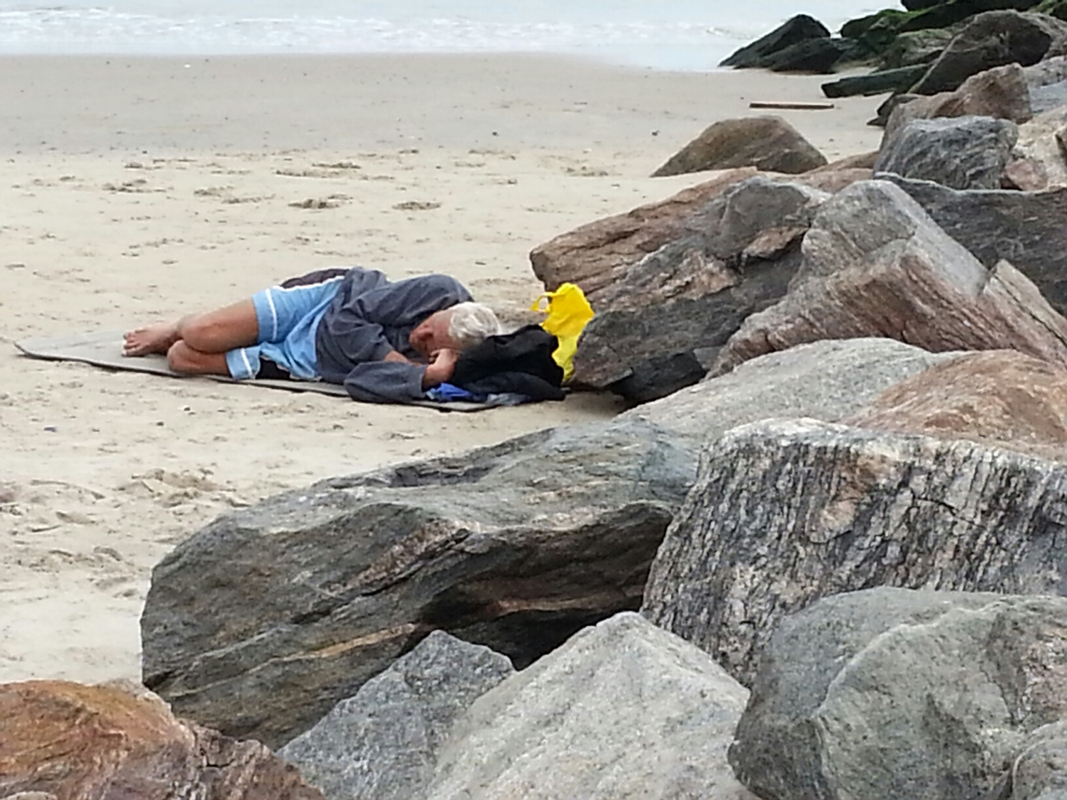
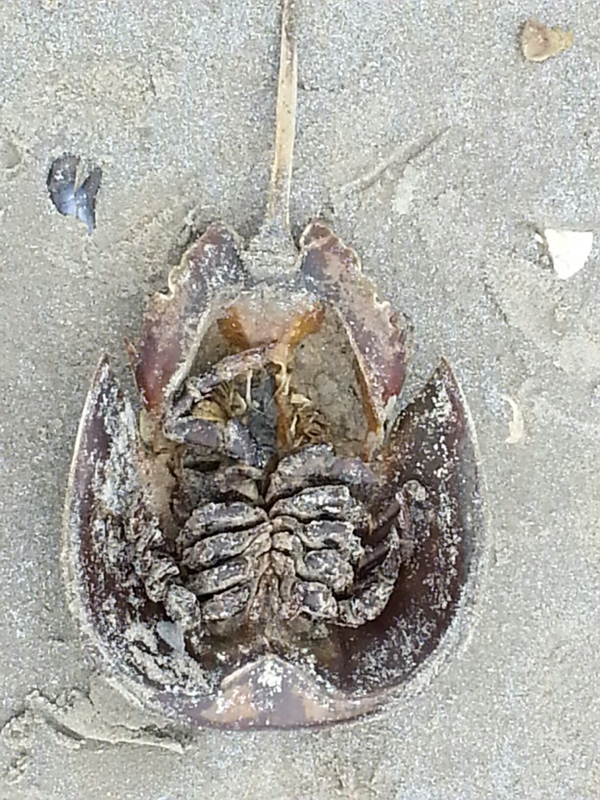
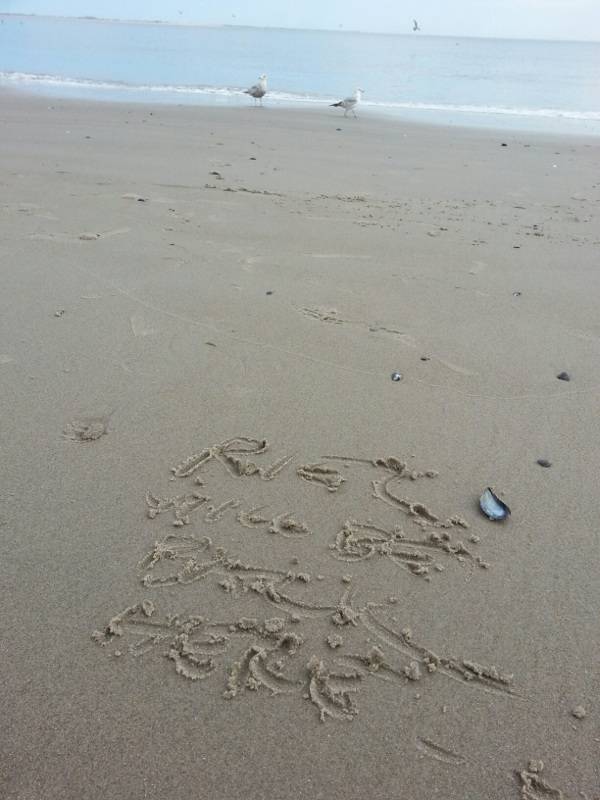
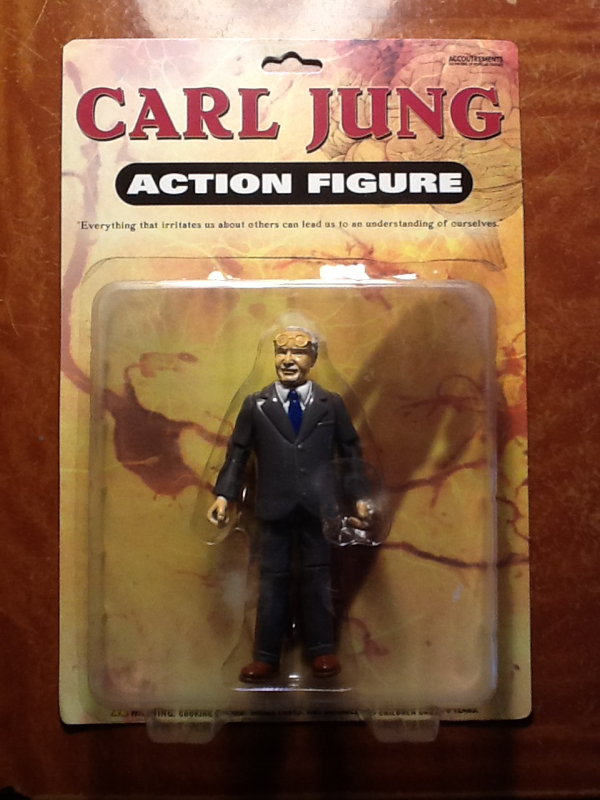
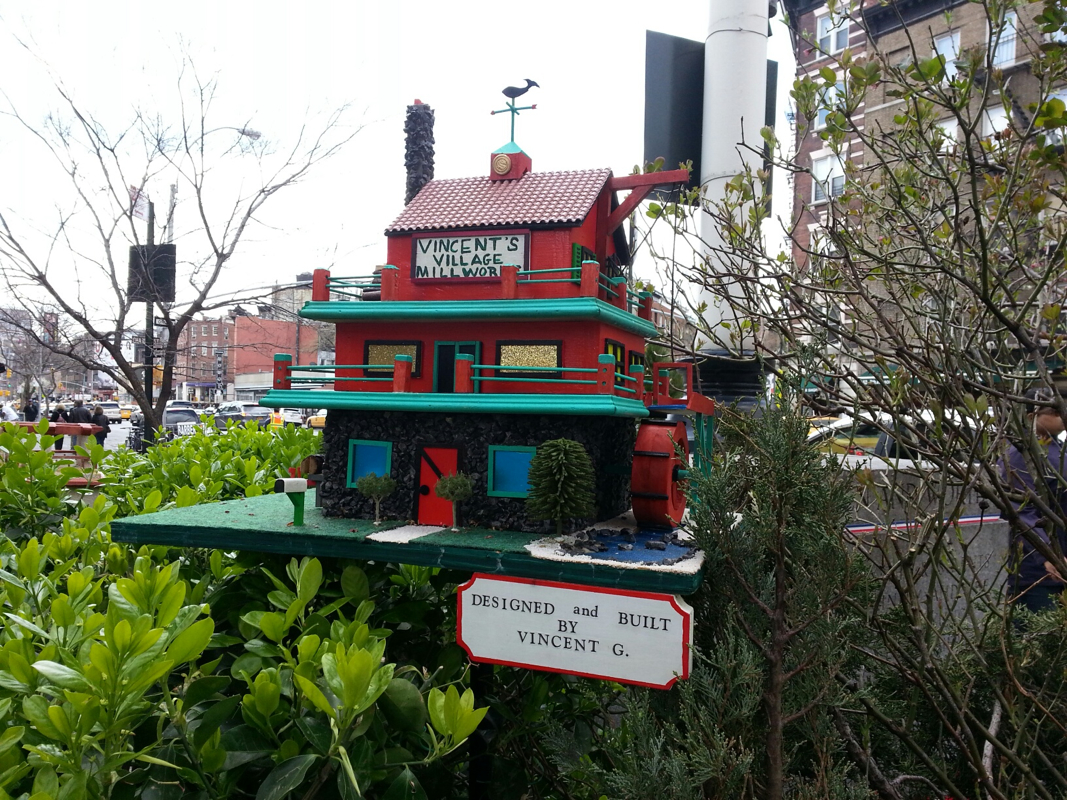









 RSS Feed
RSS Feed